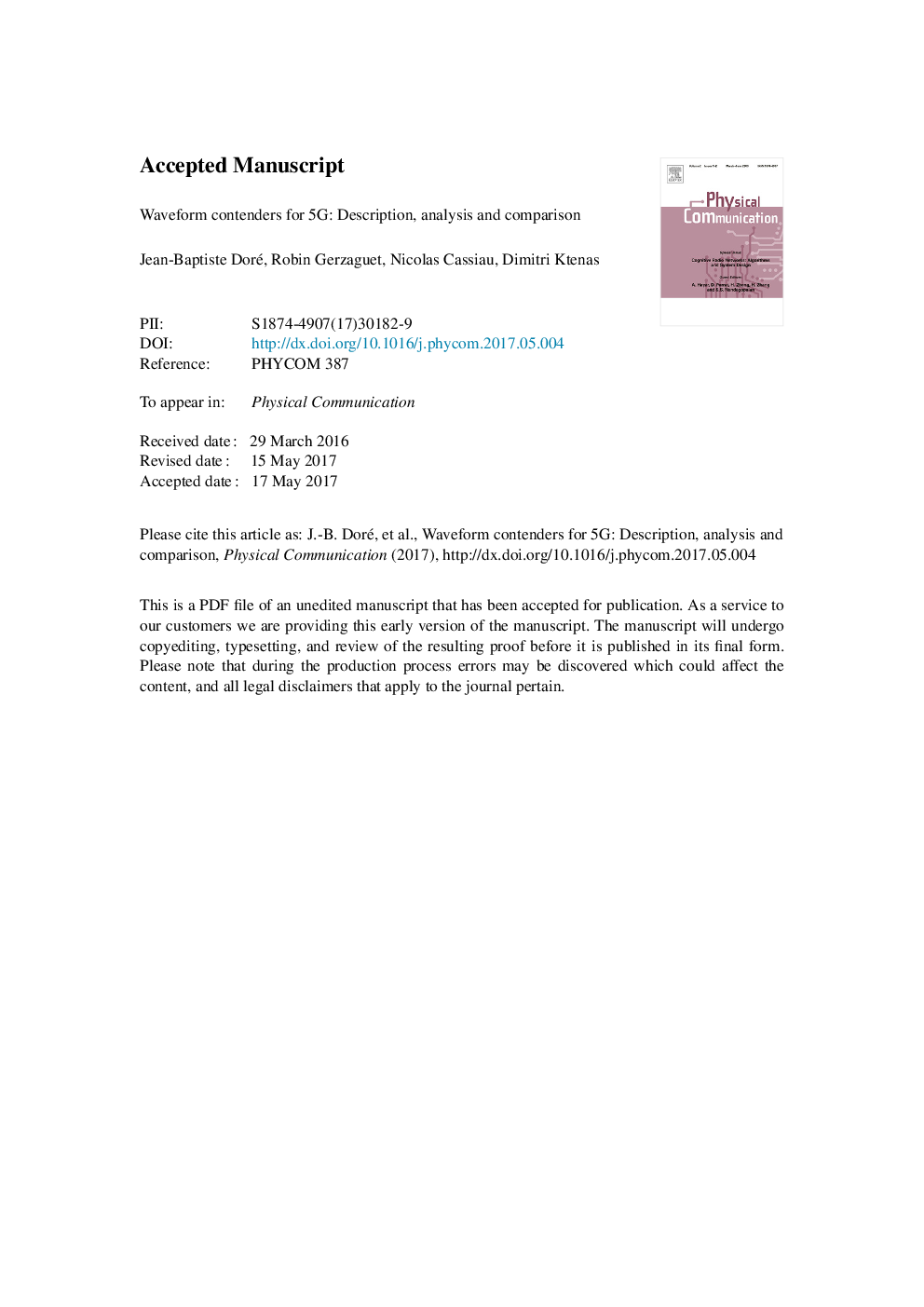| Article ID | Journal | Published Year | Pages | File Type |
|---|---|---|---|---|
| 4957600 | Physical Communication | 2017 | 35 Pages |
Abstract
5G will have to cope with a high degree of heterogeneity in terms of services and requirements. Among these latter, flexible and efficient use of all available non-contiguous spectra for different network deployment scenarios is one challenge for the future 5G. To maximize spectrum efficiency, a flexible 5G air interface technology capable of mapping various services to the best suitable combinations of frequency and radio resources will also be required. In this work, a fair comparison of several 5G waveform candidates (UFMC, FBMC-OQAM, and FBMC-QAM) is proposed under a common framework. Spectral efficiency, power spectral density, peak to average power ratio and performance in terms of bit error rate under various realistic channel conditions are assessed. The waveforms are then compared in an asynchronous multi-user uplink transmission. Based on these results, in order to increase the spectral efficiency, a bit loading algorithm is proposed to cope with the non-uniform distribution of the interference across the carriers. The benefits of these new waveforms for the foreseen 5G use cases are clearly highlighted. It is also stressed that some concepts still need to be improved to achieve the full range of expected benefits of 5G.
Keywords
Related Topics
Physical Sciences and Engineering
Computer Science
Computer Networks and Communications
Authors
Jean-Baptiste Doré, Robin Gerzaguet, Nicolas Cassiau, Dimitri Ktenas,
